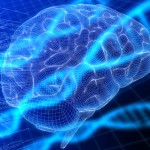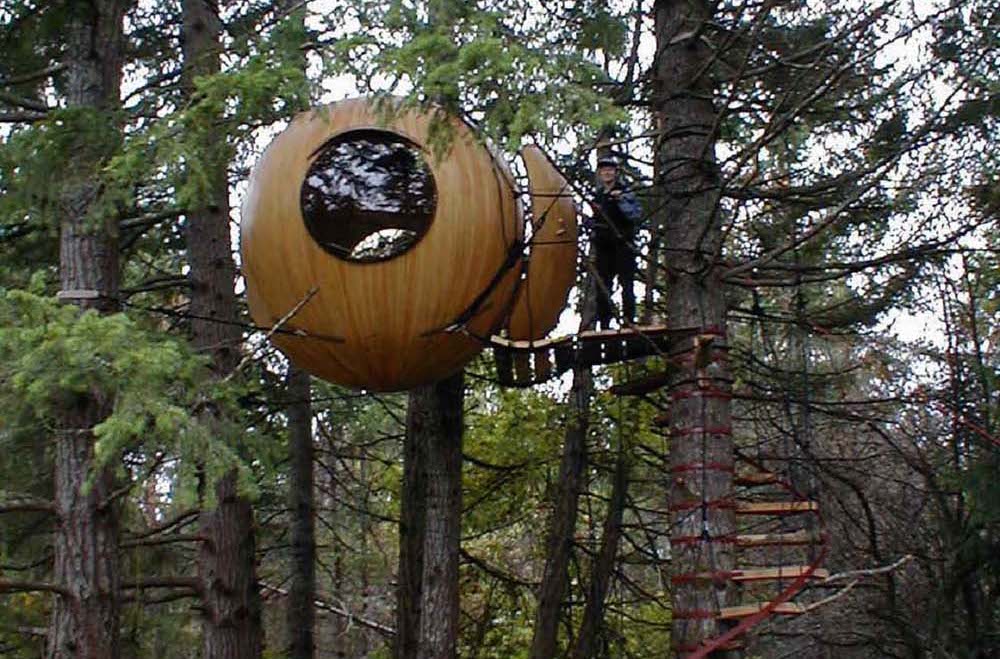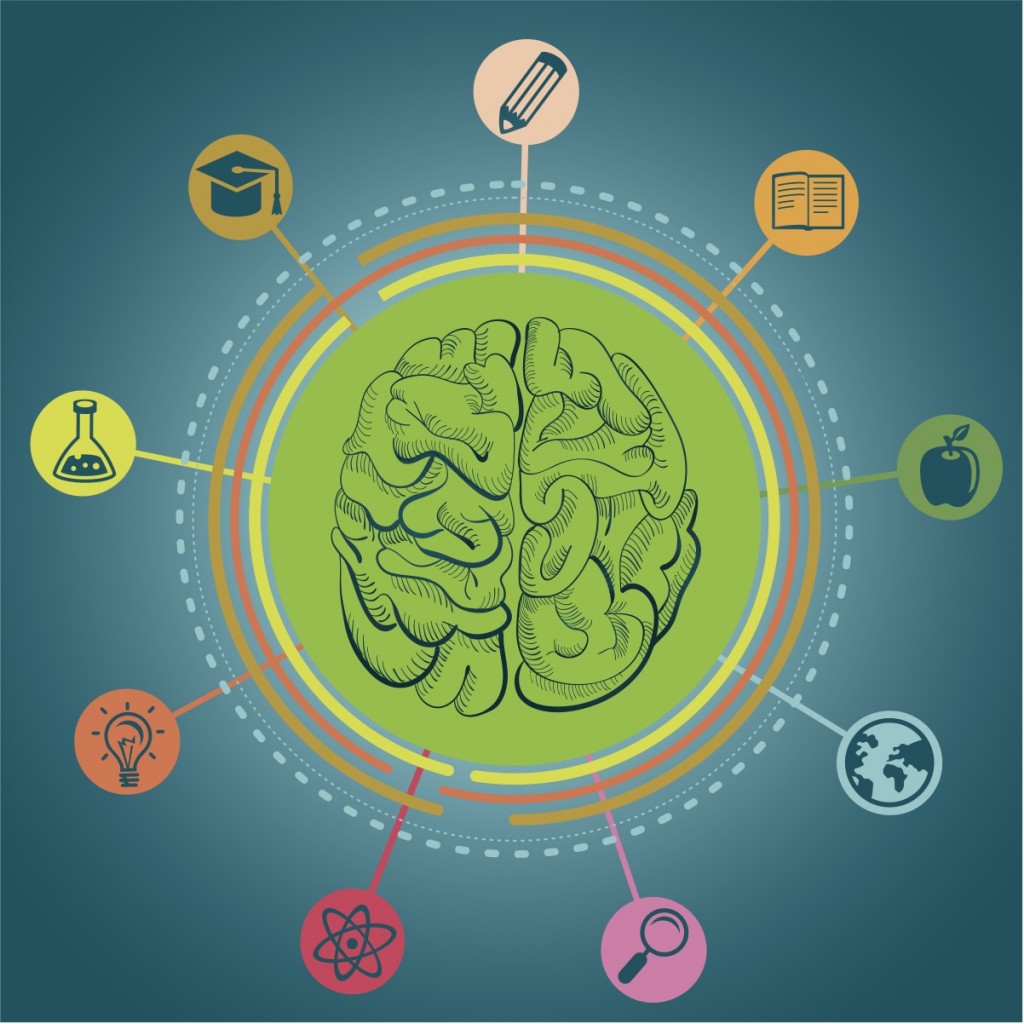
Our brains are the most environmentally sensitive organs in our body: indeed a large part of the brain’s job is to spot regularities in its environment and then use those patterns to plan future actions (Clark, 2013).
It is perhaps a surprise then that many aspects of the structure of the brain, as measured by MRI scanning, are highly heritable. Overall estimates of the heritability of brain structures are different for different parts of the brain, but reach up to 90% in some areas. This means that there is a lot of DNA (or genetic) change that we currently don’t understand that is contributing to differences in the gross structure of the brain.
The rewards for combining knowledge about how the brain is structured (MRI brain scans) and genetics could be great. It would allow us to pinpoint important influences on how cells work, and combine together. This information will then be immensely useful: both to target molecular biology towards important proteins, and to complement the insights gained from studying how cells work in order to better understand the brain both in health and disease.

Pay attention at the back! A little clarification is important here
Calculating heritability
Researchers try to measure the relative contribution of DNA changes by calculating heritability. These percentages are often misunderstood: a heritability of 80% does not mean that ‘genes’ or ‘nature’ are contributing 80% of the liability to having a condition or the size of certain area of the brain. It means that 80% of the differences between people are related to changes in DNA. If a gene for ‘having a brain’ existed it would not be part of a heritability estimate, as no human could have a change in that gene and live. In fact there are a number of genes that are like this, and therefore not included (but you could question how important these genes are to working out what makes people different to each other, rather than the what makes them similar to each other).
Variable traits and improving technology
The second important point about heritability estimates is that if the trait or condition you are measuring becomes more variable, then the apparent contribution of a fixed amount of DNA variability will drop. Current MRI scanning measures brain structures at a macroscopic level, but does not have the power to look at how individual neurons are organised. We have recently discovered a fantastic new scanner: the Arrow Woodland Evaluator (AWE). It is 20 times more powerful than MRI and we can see much greater detail of how the brain is structured. At this level individuals are much, much more different to each other than at the level of detail MRI can manage. This means that the apparent heritability of the structure of the brain falls significantly, without any change in the DNA code.

We couldn’t find a photo of an AWE scanner, but the Great Elf Mother assures us that it’s very similar to Ye Olde Woodland Scanner that we elves have been using for generations
The importance of environment
Thirdly, it is crucial to appreciate that many genetic changes will only have an effect in a certain environment. In a fascinating study on the brain structure of teenage girls, a tiny change in DNA only caused a change in brain structure if their mother smoked during pregnancy. If their mother did not smoke, then having the DNA change did not affect the structure of the brain (Paus, 2012).
ENIGMA (Enhancing Neuro Imaging Genetics through Meta Analysis)
So, given the complexities involved, how can we combine genetic data with brain imaging?
Both fields gather massive amounts of data for just one individual, and could potentially run a huge amount of tests on how groups of people differ. This makes large sample sizes (at least thousands) critical in getting the most relevant information out of the tests. As the emerging field of imaging genomics has developed over the last few years the challenge of sample sizes has led researchers to form large collaborations around the world.
The Enhancing Neuro Imaging Genetics through Meta-Analysis (ENIGMA) consortium has developed a network of 70 institutions from around the world. A large part of the project has been to standardise the protocols for handling brain scan data and this paper has a very good introduction to the challenges, and the successes, they have had trying of do this.
They have analysed data from almost 13,000 people and the first published analysis established that a small DNA code change (just one base pair) was strongly related to the size of the hippocampus.
Further work has related this genetic change to changes in behaviour, changes in brain function and the risk of developing a number of mental disorders.
ENIGMA has expanded markedly since it started in 2009 and there is a large amount of work going on sharing and analysing data on even bigger samples. Different groups have been formed focusing on different parts of the healthly brain and specific mental health problems. If you have any blood tests and MRI scans gathering dust in the back of the filing cabinet (as you do!), you should think about getting in touch with ENIGMA and getting involved.

The ENIGMA consortium has developed a network of 70 institutions from around the world
Summary
- Linking brain scans with genetic information offers a powerful way to further our understanding of how the brain works
- To do this properly (with the requisite sample sizes) many researchers from around the world need to collaborate
- ENIGMA is at the cutting edge of this emerging field of imaging genomics, and the results they find over the next few years will be fascinating
- This work will point to the role of a specific gene in brain function. When this happens, molecular biology will then need to do a lot of heavy lifting for us to understand the precise mechanisms affected
Links
Thompson PM et al. The ENIGMA Consortium: large-scale collaborative analyses of neuroimaging and genetic data. Brain Imaging and Behavior 01/2014; DOI:10.1007/s11682-013-9269-5.
Clark A. Whatever next? Predictive brains, situated agents, and the future of cognitive science. Behavioral and Brain Sciences 2013 DOI: 10.1017/S0140525X12000477 [Abstract]
Paus T. KCTD8 gene and brain growth in adverse intrauterine environment: a genome-wide association study. Cereb Cortex. 2012 Nov;22(11):2634-42. doi: 10.1093/cercor/bhr350. Epub 2011 Dec 9.
ENIGMA Network (Enhancing Neuro Imaging Genetics through Meta Analysis) website.


RT @Mental_Elf: Imaging genomics: can we link genes to brain structure and function? http://t.co/x2TDgzObNg
Imaging genomics: can we link genes to brain structure and function? One function: brains are pattern creating http://t.co/mwbl3p4CnH
Imaging genomics: can we link genes to brain structure and function?: Linking brain scans with genetic informa… http://t.co/suYpBmK2nC
Dag T. Hanoa liked this on Facebook.
Katy Kay liked this on Facebook.
The Mental Elf liked this on Facebook.
Today @andrewwatson28 blogs about the ENIGMA Consortium, who are at the cutting edge of imaging genomics http://t.co/qJCHoxHitC
Imaging genomics: can we link genes to brain structure and function? http://t.co/NOsg0UnUSj via @sharethis
Imaging genomics: linking genes to brain structure & function http://t.co/hYHdrIJZ5o
The elves are getting excited by their new Arrow Woodland Evaluator today. 20 times more powerful than MRI. Phwoar! http://t.co/qJCHoxHitC
Mental Elf: Imaging genomics: can we link genes to brain structure and function? http://t.co/fPAt2jVmdP
Linking brain scans w/ genetic information offers a powerful way to further our understanding of how the brain works http://t.co/x2TDgzObNg
João Leal liked this on Facebook.
Imaging genomics: can we link genes to brain structure and function? http://t.co/L5MR9PyqjO #innovation #cns
Joana Pereira liked this on Facebook.
Find out more about how we can combine genetic data with brain imaging http://t.co/qJCHoxHitC
New post via @Mental_Elf on imaging genomics: linking genes to brain structure/function http://t.co/DZScPEPoeI #mri #neuro #genetics #brains
A single nucleotide has a strong correlation to the size of the hippocampus. Amazing. Astounding. Wow.
@NeuroNerd13 @Mental_Elf
Don’t miss: Imaging genomics – can we link genes to brain structure and function? http://t.co/x2TDgzObNg
@Mental_Elf great article thanks
“@Mental_Elf:. ENIGMA. Don’t miss: Imaging genomics – can we link genes to brain structure and function? http://t.co/pqeT9D528R”
Eugenics?
Imaging genomics: linking genes to brain structure & function – http://t.co/9f54lfSR8V
Joana Pereira liked this on Facebook.
João Leal liked this on Facebook.
Dag T. Hanoa liked this on Facebook.
Katy Kay liked this on Facebook.
The Mental Elf liked this on Facebook.